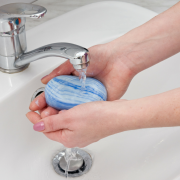Sun Safety for Your Eyes and Skin
Don’t get burned! July is National UV Safety Month and we’re here to educate you on sun safety! According to the American Academy of Dermatology, it’s estimated that 1 in 5 Americans will develop skin cancer in their lifetime. Harmful rays from the sun can also cause sunburn, damage to your eyesight, the appearance of aging, and other changes in your appearance. You can easily protect yourself and your family from the sun.
The simplest way to protect your skin is to wear protective clothing, a hat and broad-spectrum water-resistant sunscreen on any exposed skin. Broad-spectrum means it protects against both UVA and UVB rays. The sunscreen should have a Sun Protection Factor (SPF) of at least 30 and should be applied liberally. The rules for applying sunscreen is basically apply some and then apply some more because the AAD says most people only apply 25-50% of the recommended amount of sunscreen. That reduces the sun protection! Apply a generous amount 15 minutes before you go outdoors. It should be reapplied about every 2 hours and/or after swimming or sweating. Don’t forget lip protectant with SPF. Sunburn is not fun; remember that it increases your chances of skin cancer.
The best way to protect your eyes and the skin around them is also a hat and high-quality UV-resistant sunglasses. Sunglasses should cover and protect you from all angles. They should block 99-100% of UV rays and absorb most HEV rays. Babies and children need to be properly clothed and outfitted with sunglasses and hats. Who would want to miss an opportunity to dress your little one in cute sunnies and hats anyway?! We can help you pick out the best sunglasses to protect yourself and your loved ones.
Shade is nice, so why not try it out! Sitting in the shade can block rays. Sources say the sun is at its strongest between 10 am and 2 pm. That sounds like the perfect time to enjoy a shady spot! Keep in mind, just because it’s cloudy doesn’t mean you can skip the sunscreen! Up to 80% of the sun’s harmful UV rays can still penetrate your skin on cloudy days. Just because it’s winter doesn’t mean the sun isn’t a danger either. You should wear your sunglasses in the shade, on cloudy days, and all seasons. Other risks for sun exposure are higher altitudes and reflective surfaces such as water, sand or snow.
To read more about sun safety or determine your risk levels, you can check the Environmental Protection Agency’s UV index daily.






